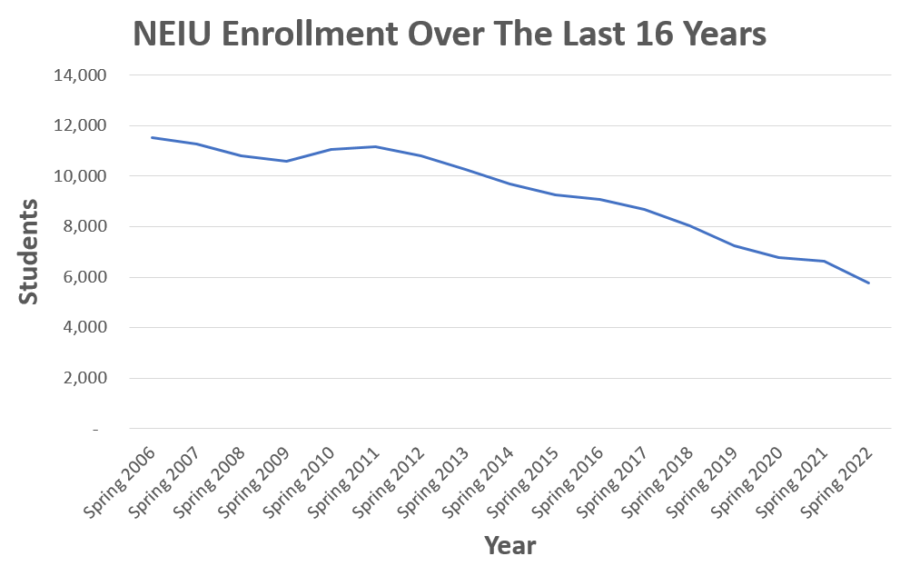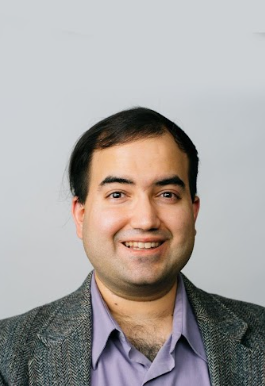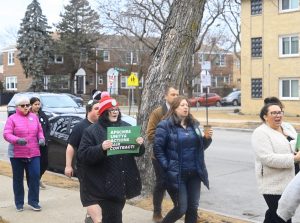Reviving the Campus
October 4, 2022
NEIU needs further revival due to the effects of the COVID-19 pandemic. As a public health student, it is important to me to remind the reader that the pandemic is currently transitioning from the novel pandemic phase to the endemic phase. In order to become endemic, the virus must not be spreading uncontrollably to multiple nations and new cases must not be constant. Thus, the pandemic may feel like it is over, but it is actually not. The desire for it to be over may be overriding the fact that it is not over…yet. This innate human desire to recover from troublesome times brings the need to revive the campus.
There are numerous activities that are helping to revive the campus brought to you by Student Leadership Development, Campus Recreation, seminars, guest speakers and various clubs. The Eagle Lock-In event took place on Sept. 30 to Oct. 1, 2022. It was just one of many events to be offered at NEIU. These activities consist of almost entirely in-person activities, which is great for the revival, but the campus should still be bustling with more students. According to NEIU’s Enrollment Fact Sheets from the Office of Institutional Studies and Assessment, there were a total of 12,227 students enrolled at NEIU in 2004, and now the current number has dwindled to 5,756 students. This dramatic difference can not solely be explained by the pandemic because, in Spring 2019, there were 7,226 students enrolled at NEIU. The university has experienced an average decrease of 360 students per year since the Spring 2006 semester. That is the equivalent of losing approximately one student per day every day for 16 years. Only two years have experienced an increase in enrollment during this time: Spring 2010 and Spring 2011.
The purpose of the university is to offer formal academic material. However, due to the pandemic, online courses have become the default, and thus, education quality seems to have declined. Many courses have remained online even when the campus seems to have plenty of on-campus activities. Being in a physical classroom surrounded by actual classmates seems to have been lost in time like a sinking ship. Having invigorating discussions between students and inspiring classroom facilitators brought about the notion of professional collaboration. Being surrounded by fellow students allowed them to create and float their ideas to like-minded others.
Synchronous Zoom and Google Meet classes do not have the same invigorating and authentic classroom feeling. There does not seem to be any formality to justify the cost of higher education, especially when educational YouTube videos by professional content creators have higher production value than professors’ live or pre-recorded content. I have come across great and memorable professors who taught synchronous courses, but it has happened far too infrequently. The best synchronous courses I experienced included live breakout sessions and small group discussions during the virtual meetings.
Asynchronous classes are, on the other hand, an entirely abysmal mess. For instance, several professors pull educational material off of YouTube without making personalized content for the students. Some of the best asynchronous courses are the ones offered by MIT’s OpenCourseWare or Hank Green’s Crash Course which are phenomenal ways to learn the material with outstandingly high production value. Also, those two curricula are free. Those two entities really set the bar quite high for what I expect from asynchronous course material. Furthermore, discussion boards should not be a replacement for real human interactions. I have no problem with professors reusing identical material from one semester to another, but the quality should have some improvement from year to year until the golden standard of MIT online courses is achieved.
Online courses existed before the COVID-19 pandemic, but the pandemic may have accelerated the dependence on online infrastructure. Thinking back to 2005, the internet was in its infancy. For example, YouTube was not acquired by Google, and Facebook was exclusive to university students with the .edu email. Also, MySpace was the epitome of social media at the time. Smart phones existed, but they were niche items with clunky buttons, and mostly used by business travelers. Online classes at universities were not a consideration at all during this era. Online classes were nonexistent. Perhaps, it is imperative to take a good long look in the academic mirror and start questioning the efficacy of online coursework. It has become increasingly apparent that institutions of higher learning need students more than students need them.
NEIU needs to have – and emphasize – more in-person courses for all majors in order to regain the previous enrollment figures. An online presence is a double-edged sword. Surely, it gives convenience to students, but there is a lack of authenticity, formality and credibility in forming connections and networking with others. The system seems broken and insurmountable, but transitioning to fully in-person courses may be a worthwhile consideration to see an increase in enrollment figures.









